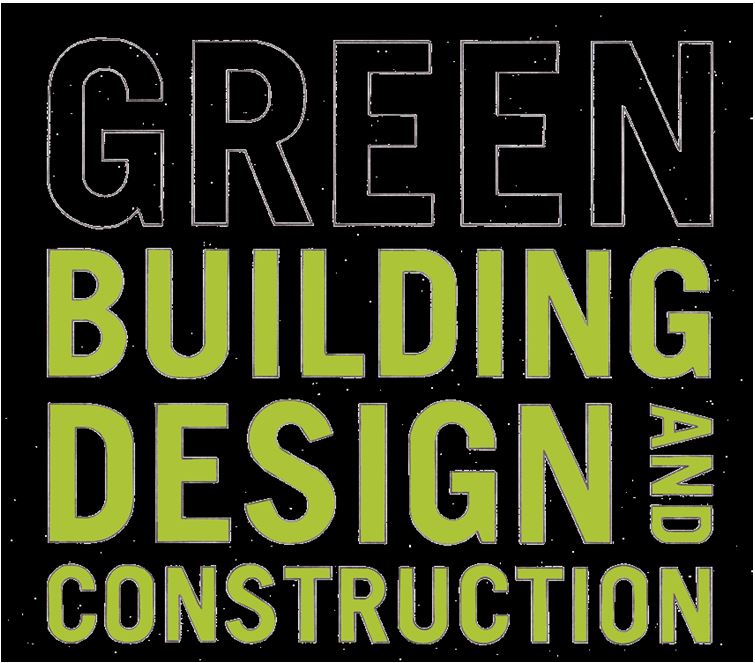چرا ساختمان سبز ؟؟؟
تاثیرات محیطی در طراحی ساختمان ، ساخت، و اجرای آن بسیار پیچیده است. مصرف سالانه ساختمان ها بیش از 30 درصد انرژی کل و بیش از 60 درصد مصرف الکتریسیته در ایالات متحده آمریکا را شامل میشود. در سال 2006 بخش ساختمان های تجاری بیش از 1 میلیون تن دی اکسید کربن ساخته است ، که یک افزایش چشمگیر 30 درصدی نسبت به سال 1990 را مشاهده می کنیم. هر روز 5 میلیون گالن از آب شرب فقط در فلاش تانک توالت ها مصرف می گردد. در یک ساختمان تجاری معمول در آمریکای شمالی ، هر شخص روزانه تقریبا 1.6 پاوند زباله تولید میکند که در یک ساختمان با 1500 نفر ، سالانه 300 تن زباله می تواند تولید شود.
دلایل بسیار دیگر و آمار و ارقام دیگر از تمامی جهان، می تواند دلیل محکمی بر استفاده از تولید ساختمان های سبز باشد، بطوریکه اقدامات بهره وری انرژی و بهینه سازی مصرف انرژی در ساختمان ها ، مخارج اجرا و هزینه های مصرف انرژی را کاهش می دهد و تاثیرات محیطی مثبتی را به همراه دارد که می توان به حفاظت هرچه بیشتر لایه ازن ، کاهش گازهای گلخانه ای ، کاهش ذرات معلق مضر برای سلامتی انسان ها اشاره نمود.
در همین راستا راهکارهای متفاوتی صورت میگیرد که به استفاده از سیستم های نوین تاسیساتی مانند سقف سرد، هیت پمپ های زمین گرمائی ، و پانل های گرمایشی تشعشعی و انرژی های نو از قبیل انرژی خورشیدی، انرژی بادی و ... منتهی میگردد.
شایان ذکر است که سالانه بسیاری از انسان ها در کلانشهر های دنیا به هنگام سنین میانسالی و رسیدن به مرحله با راندمان بالای افراد به لحاظ استفاده از تجربیات و دانش فنی آنها ، متاسفانه به علت افزایش ذرات معلق زیان آور و آلودگی هوای لازم جهت تنفس، جان خود را از دست میدهند.
صنعت ساختمان های سبز ، از نقطه نظر توجه به تمامی نکات مربوط به ایمنی و بهینه سازی مصرف انرژی در ساختمان های اداری، تجاری، مسکونی، و ساختمان های خاص که در مبحث نوزدهم مقررات ملی ساختمان ایران نیز به بخشی از آنها اشاره ای شده ، در ایران نیز مورد توجه قرار گرفته است. بطوریکه با اجرای دریافت شناسنامه فنی ساختمان ها و اخذ رتبه مصرف انرژی و ایمنی ساختمان از مراجع ذیصلاح، رویکردی مثبت و رو به جلو ملاحظه میگردد.
در ادامه به بخشی از راهنمای مرجع LEED Edition 2009 برای طراحی و ساخت ساختمان های سبز از لحاظ سازه و مصرف انرژی ، که مدیران شرکت برنولی با کسب گواهی صلاحیت از انجمن ساختمان های سبز آمریکا (LEED Green Building Council) همواره از آن به عنوان خط مشی و منشور مدیریت و کیفیت بهره می برند، اشاره میگردد. موضوعات این مرجع همواره در ویژگی های LEED، میزان اعتبار، روند و نمای کلی، حداقل سیستم مورد نیاز برنامه ، راهکارها، مرحله طراحی، مرحله ساخت ، استراتژی گواهی صلاحیت، رتبه بندی کیفیت {( 49-40 تائید شده) (59-50 رتبه سیلور) (79-60 رتبه گلد)( 80 به بالا رتبه پلاتین)} ، می باشد.
Why Make your Building Green?
The environmental impact of the building design, construction, and operations industry is enormous. Buildings annually consume more than 30% of the total energy and more than 60% of the electricity used in the United States. In 2006, the commercial building sector produced more than 1 billion metric tons of carbon dioxide, an increase of more than 30% over 1990 levels. Each day 5 billion gallons of potable water are used solely to flush toilets. A typical North American commercial building generates about 1.6 pounds of solid waste per employee per day2; in a building with 1500 employees, that can amount to 300 tons of waste per year. Development alters land from natural, biologically diverse habitats to hardscape that is impervious and devoid of biodiversity. The Far- reaching influence of the built environment necessitates action to reduce its impact.
Green building practices can substantially reduce or eliminate negative environmental impacts through high-performance, market-leading design, construction, and operations practices. As an added benefit, green operations and management reduce operating costs, enhance building marketability, increase workers’ productivity, and reduce potential liability resulting from indoor air quality problems.
Examples abound. Energy efficiency measures have reduced operating expenses of the Denver Dry Goods building by approximately $75,000 per year. Students in day-lit schools in North Carolina consistently score higher on tests than students in schools using conventional lighting fixtures. Studies of workers in green buildings reported productivity gains of up to 16%, including less absenteeism and higher work quality, based on “people-friendly” green design. Karges Faulconbridge, Inc., renovated a former grocery store for its new headquarters and diverted 88% of the construction waste from landfills through reuse or recycling. The largest high-rise real estate project in Sacramento, the Joe Serna Jr. Environmental Protection Agency Headquarters Building (Cal/EPA), was able to save $610,000 a year by implementing energy efficiency measures, making it 34% more energy efficient than required by California’s 1998 energy code. In short, green design, construction, and operations have environmental, economic, and social elements that benefit all building stakeholders, including owners, occupants, and the general public. LEED Green Building rating SystemBackground on LEED
Following the formation of the U.S. Green Building Council (USGBC) in 1993, the organization’s members quickly realized that the sustainable building industry needed a system to define and measure “green buildings.” USGBC began to research existing green building metrics and rating systems. Less than a year after formation, the members acted on the initial findings by establishing a committee to focus solely on this topic. The composition of the committee was diverse; it included architects, real estate agents, a building owner, a lawyer, an environmentalist, and industry representatives. This cross section of people and professions added a richness and depth both to the process and to the ultimate product.
The first LEED Pilot Project Program, also referred to as LEED Version 1.0, was launched at the USGBC Membership Summit in August 1998. After extensive modifications, LEED Green Building Rating System Version 2.0 was released in March 2000, with LEED Version 2.1 following in 2002 LEED Version 2.2 following in 2005.
As LEED has evolved and matured, the program has undertaken new initiatives. In addition to a rating system specifically devoted to building operational and maintenance issues (LEED for Existing Buildings: Operations & Maintenance), LEED addresses the different project development and delivery processes that exist in the U.S. building design and construction market, through rating systems for specific building typologies, sectors, and project scopes: LEED for Core & Shell, LEED for New Construction, LEED for Schools, LEED for Neighborhood Development, LEED for Retail, LEED for Healthcare, LEED for Homes, and LEED for Commercial Interiors. Project teams interact with the Green Building Certification Institute (GBCI) for project registration and certification. GBCI was established in 2008 as a separately incorporated entity with the support of the U.S. Green Building Council. GBCI administers credentialing and certification programs related to green building practice. These programs support the application of proven strategies for increasing and measuring the performance of buildings and communities as defined by industry systems such as LEED.
The green building field is growing and changing daily. New technologies and products are being introduced into the marketplace, and innovative designs and practices are proving their effectiveness. The LEED rating systems and reference guides will evolve as well. Project teams must comply with the version of the rating system that is current at the time of their registration.
USGBC will highlight new developments on its website on a continual basis at www.usgbc.org.Features of LEEDThe LEED Green Building Rating Systems are voluntary, consensus-based, and market-driven. Based on existing and proven technology, they evaluate environmental performance from a whole-
building perspective over a building’s life cycle, providing a definitive standard for what constitutes a green building in design, construction, and operation.
The LEED rating systems are designed for rating new and existing commercial, institutional, and residential buildings. They are based on accepted energy and environmental principles and strike a balance between known, established practices and emerging concepts. Each rating system is organized into 5 environmental categories: Sustainable Sites, Water Efficiency, Energy and Atmosphere, Materials and Resources, and Indoor Environmental Quality. An additional category, Innovation in Design, addresses sustainable building expertise as well as design measures not covered under the 5 environmental categories. Regional bonus points are another feature of LEED and acknowledge the importance of local conditions in determining best environmental design and construction practices.The LEED Credit weightingsIn LEED 2009, the allocation of points between credits is based on the potential environmental impacts and human benefits of each credit with respect to a set of impact categories. The impacts are defined as the environmental or human effect of the design, construction, operation, and maintenance of the building, such as greenhouse gas emissions, fossil fuel use, toxins and carcinogens, air and water pollutants, indoor environmental conditions. A combination of approaches, including impact. The resulting allocation of points among credits is called credit weighting.
LEED 2009 uses the U.S. Environmental Protection Agency’s TRACI3 environmental impact categories as the basis for weighting each credit. TRACI was developed to assist with impact evaluation for life-cycle assessment, industrial ecology, process design, and pollution prevention.LEED 2009 also takes into consideration the weightings developed by the National Institute of Standards and Technology (NIST); these compare impact categories with one another and assign a relative weight to each. Together, the 2 approaches provide a solid foundation for determining the point value of each credit in LEED 2009.





 تلفن: 66420090 - 021
تلفن: 66420090 - 021 فکس: 66915315 - 021
فکس: 66915315 - 021 info@bernoulli.ir
info@bernoulli.ir